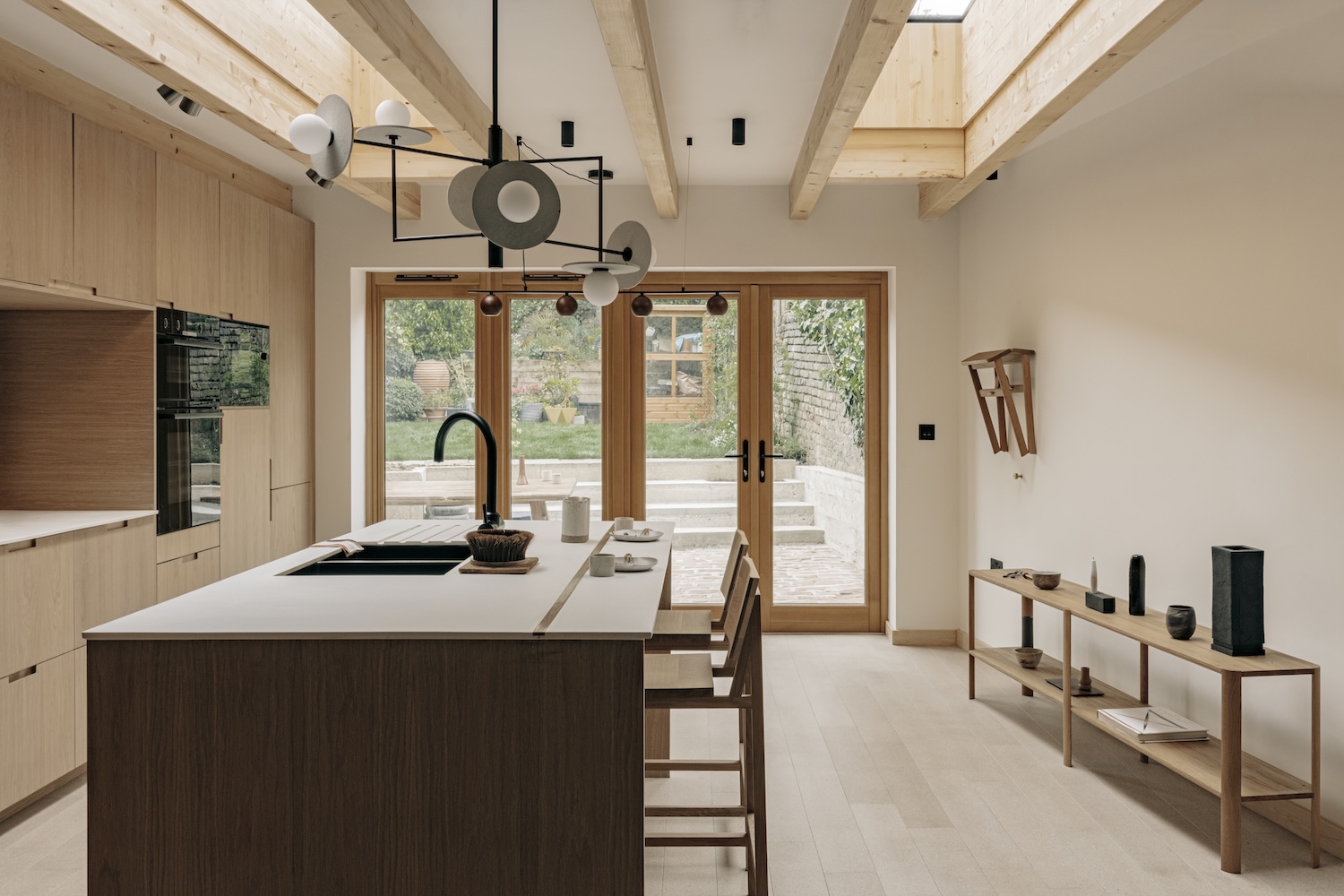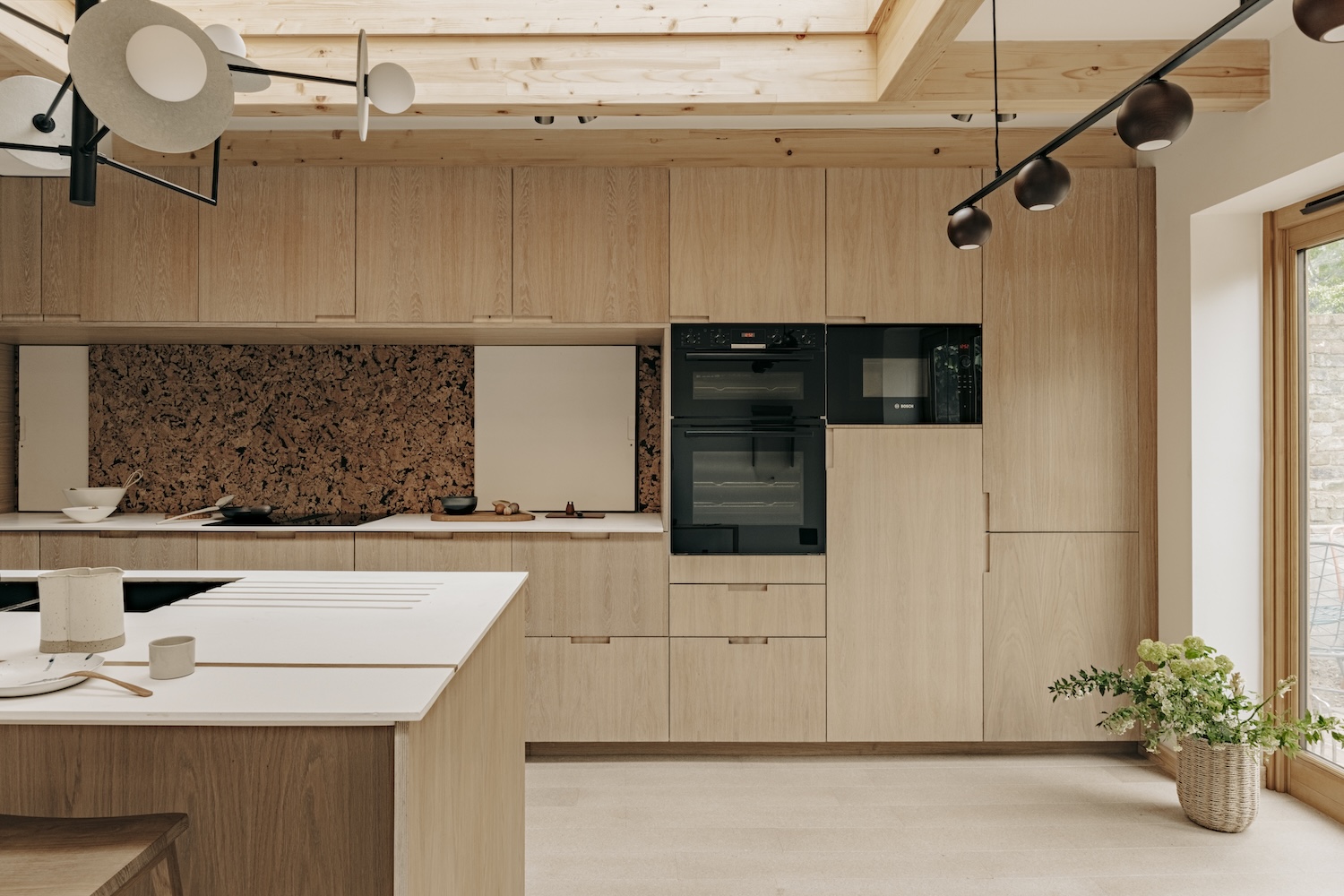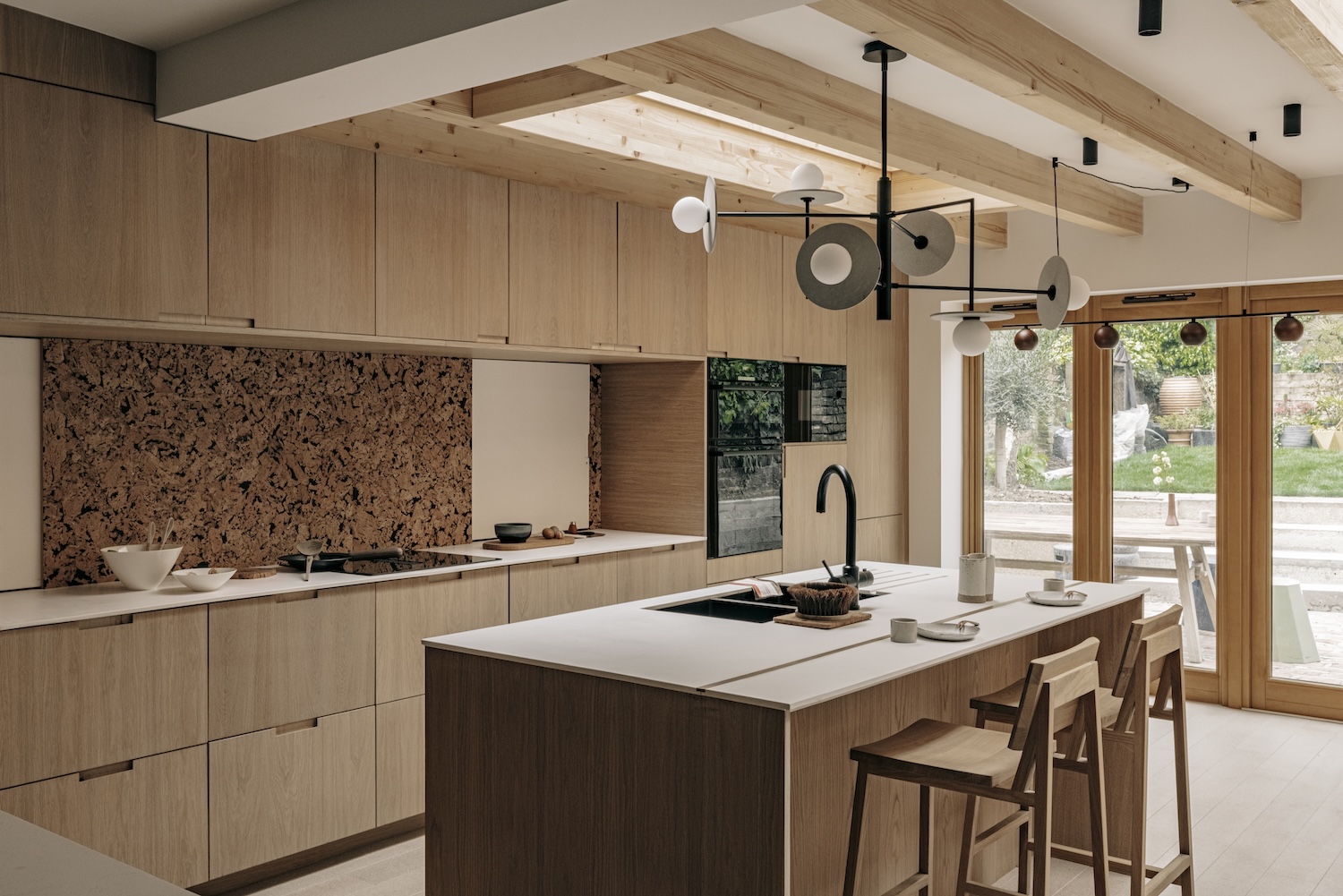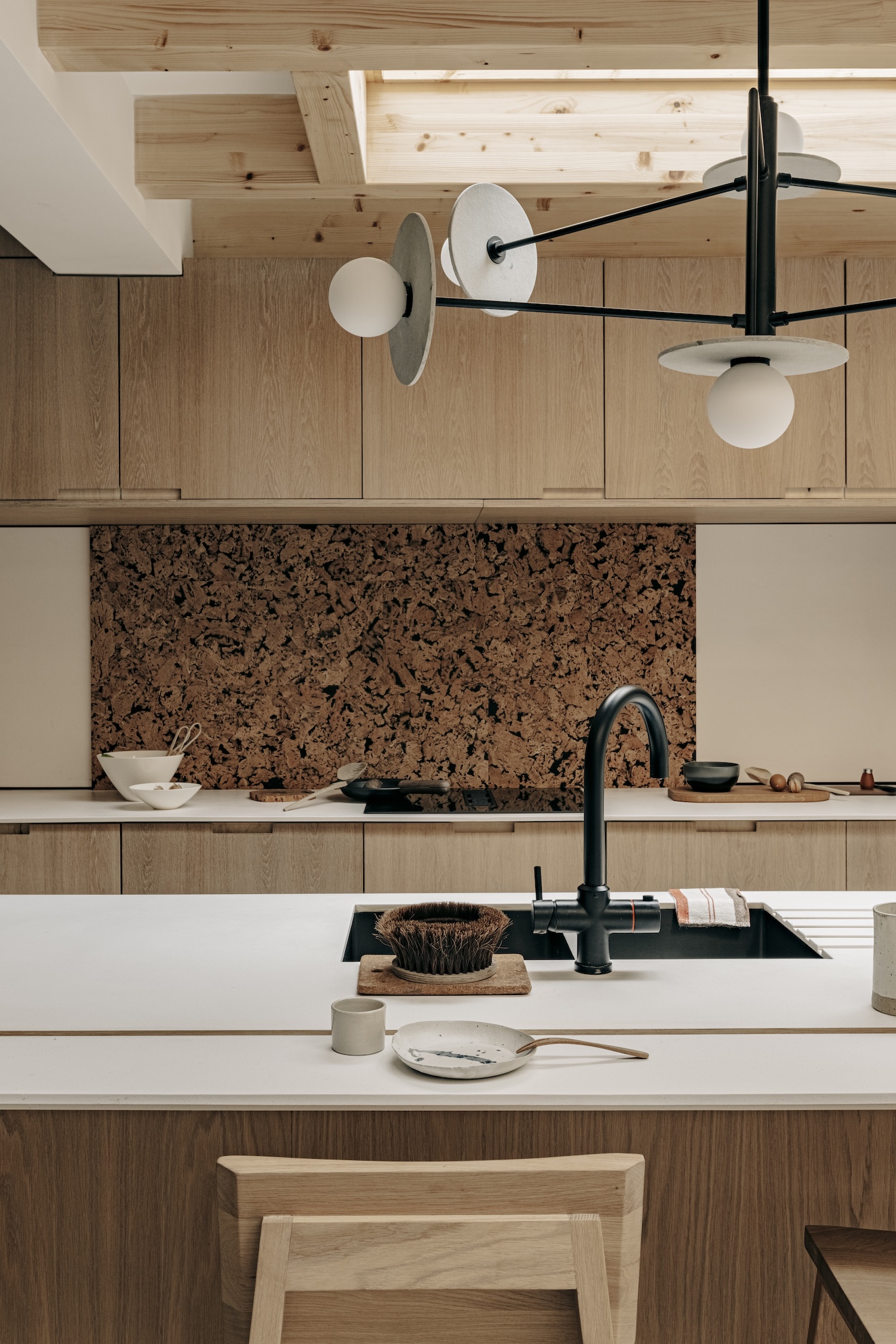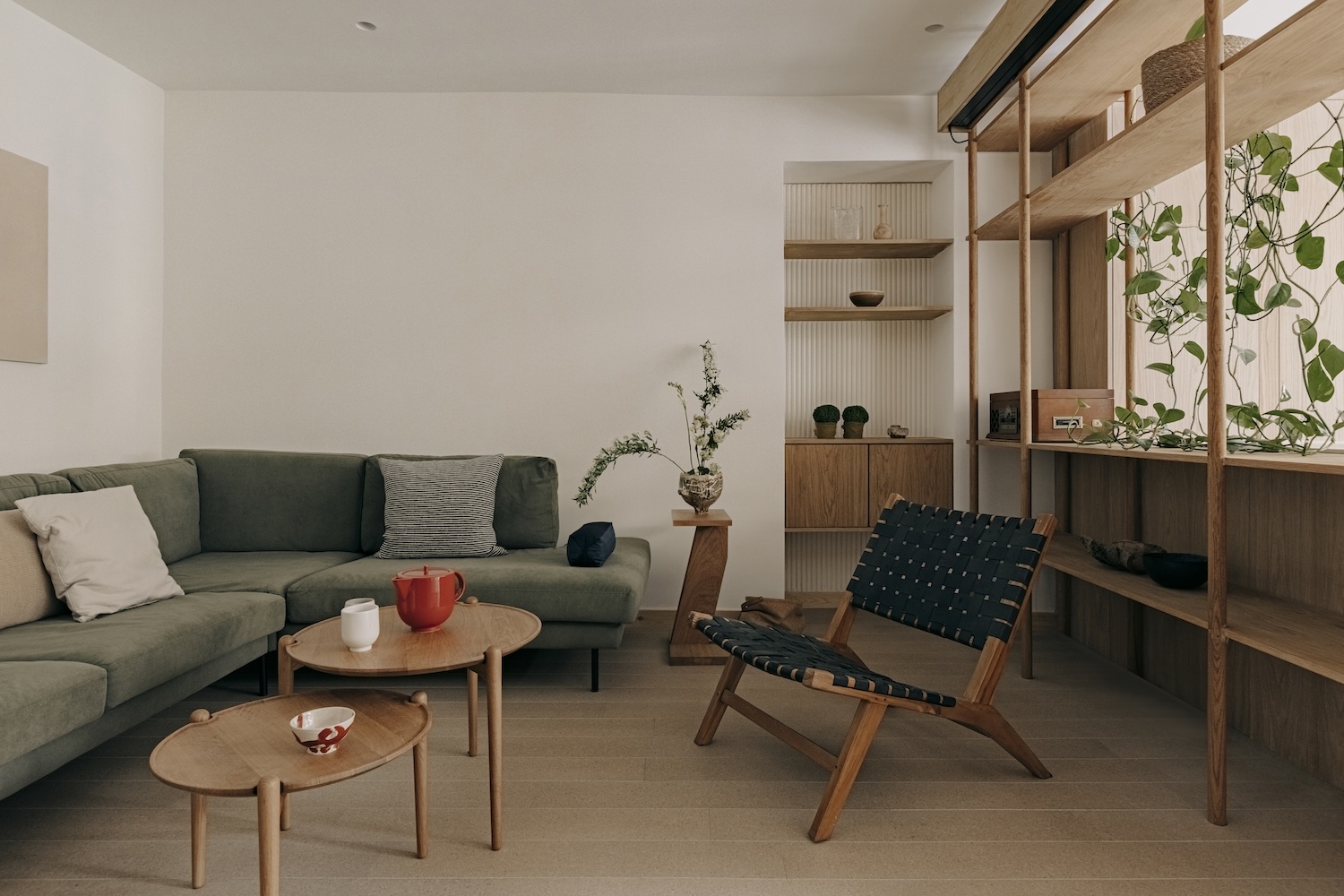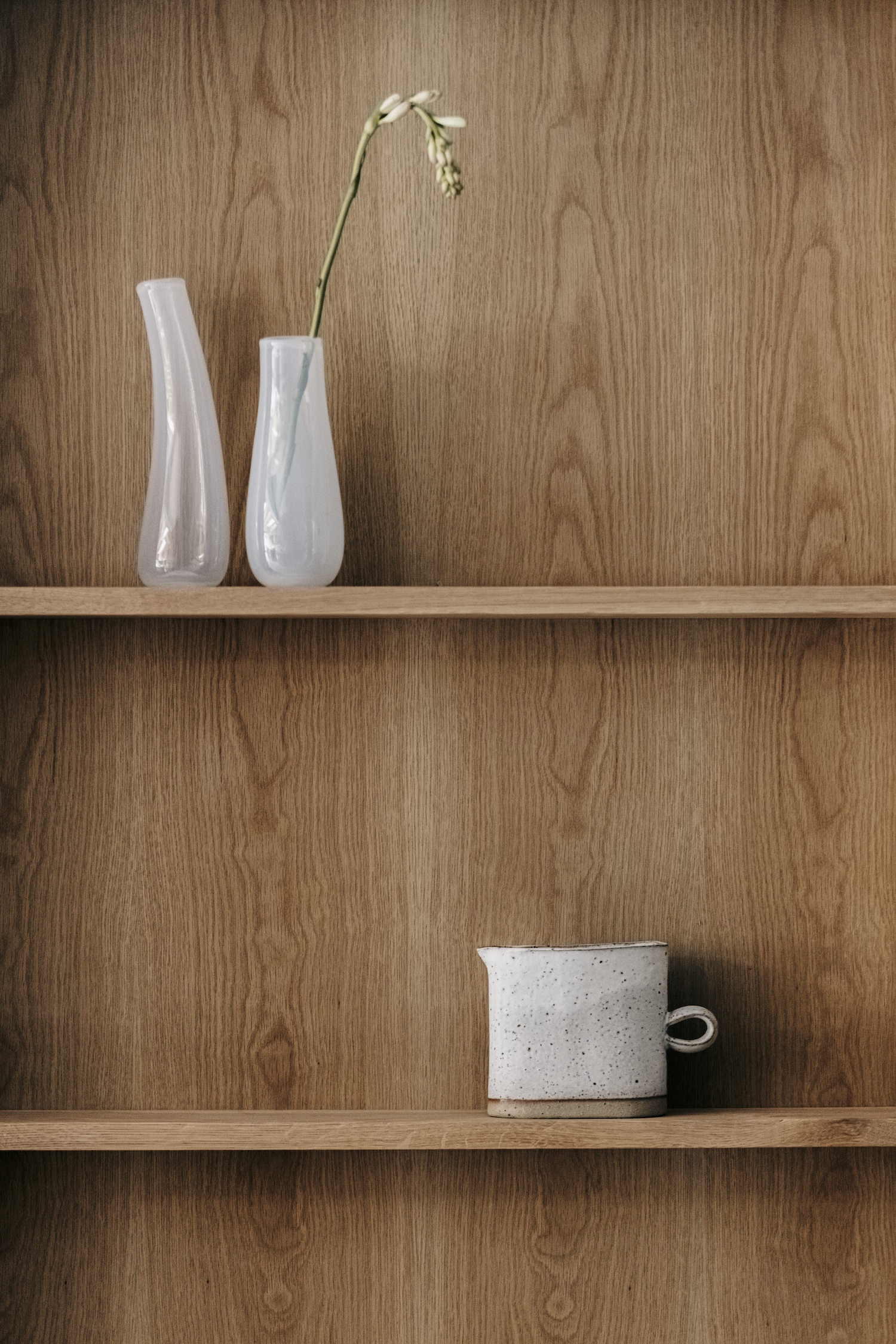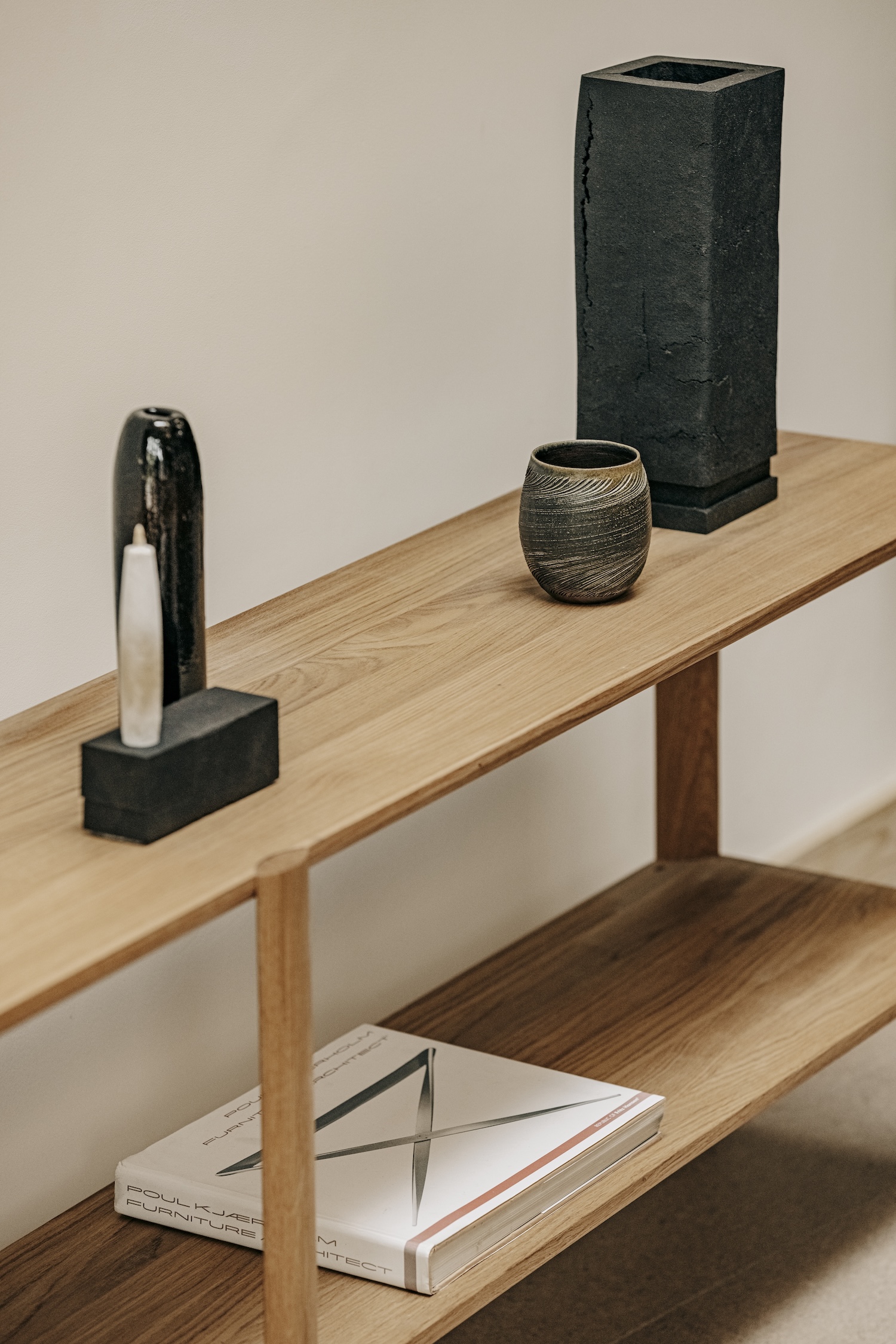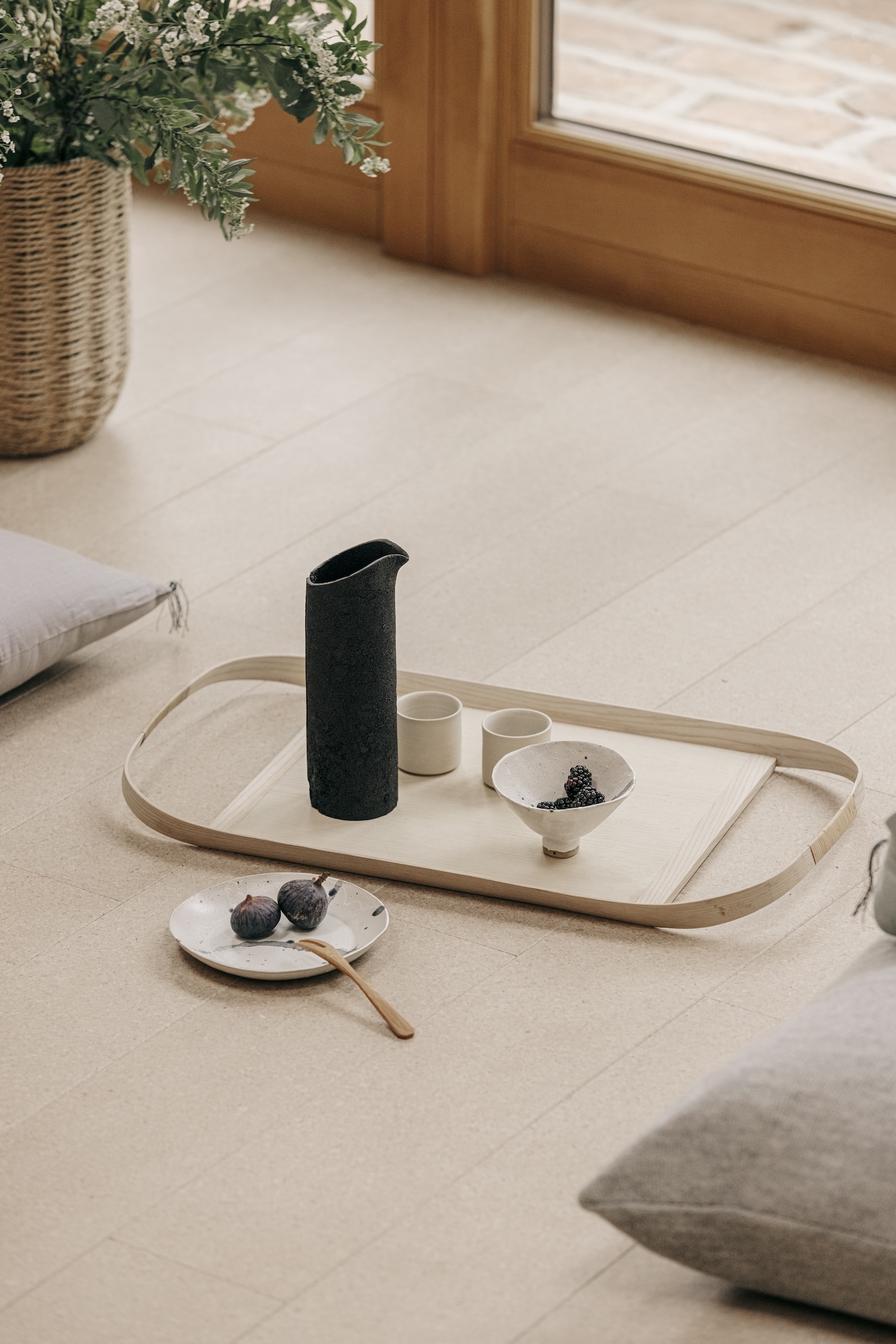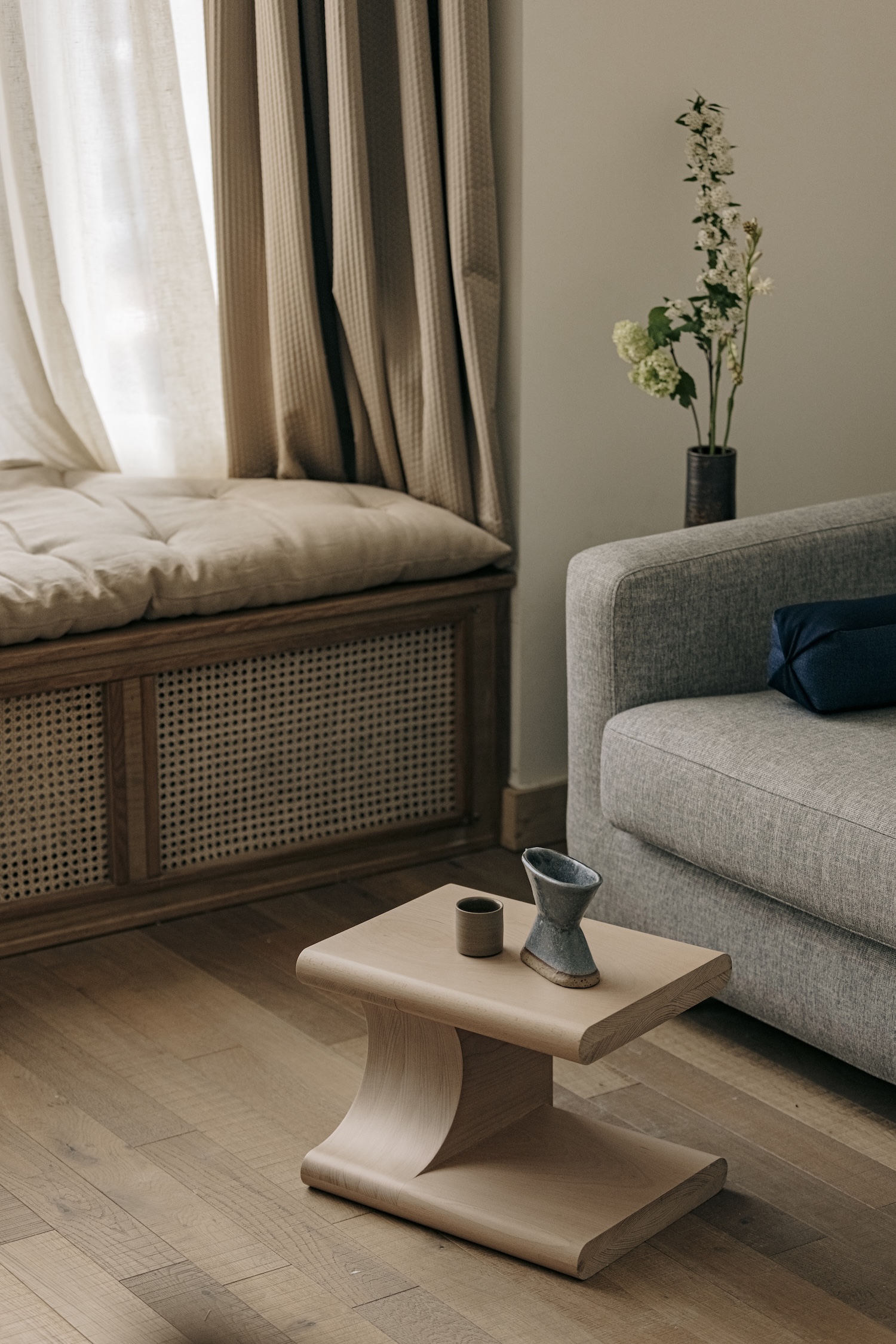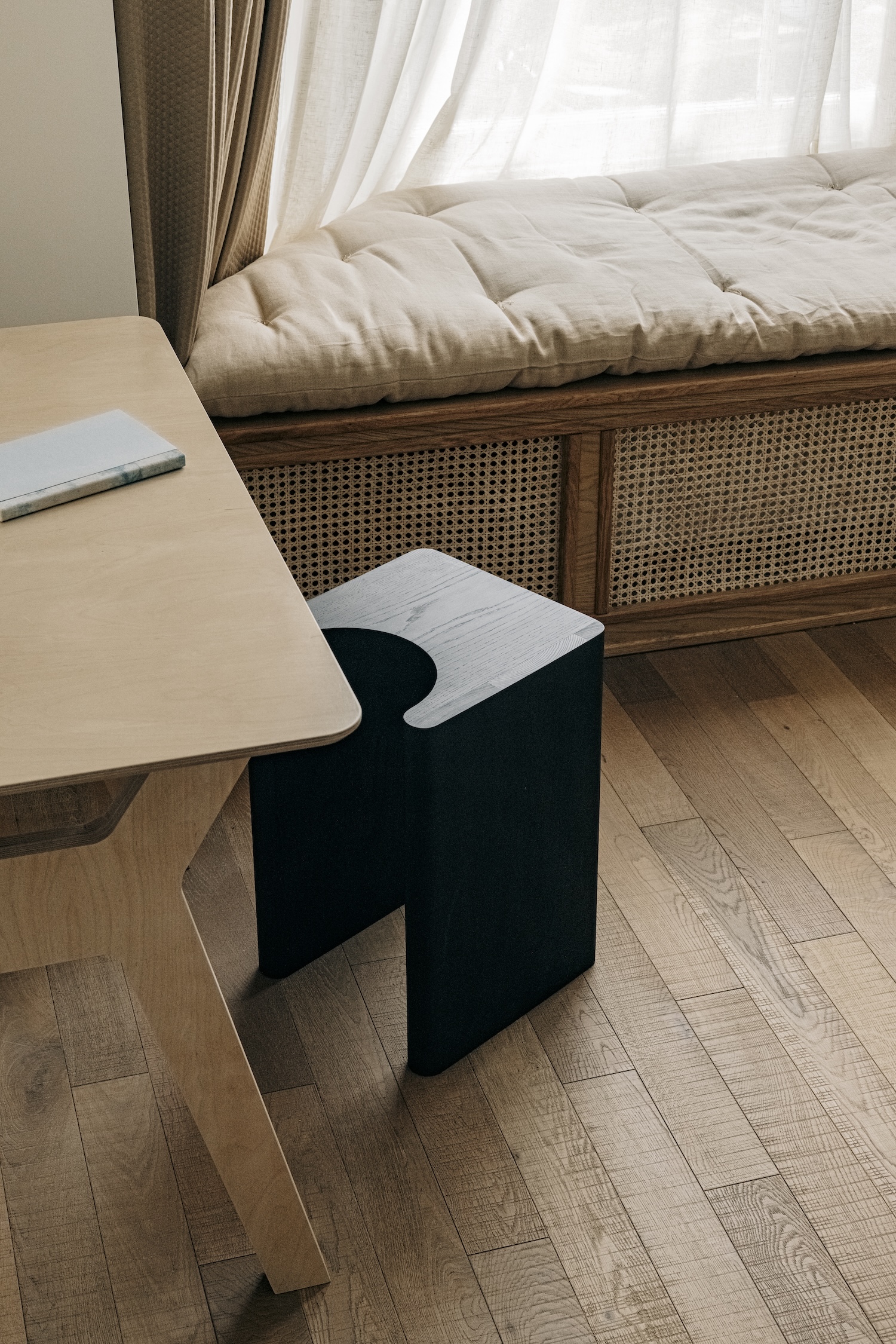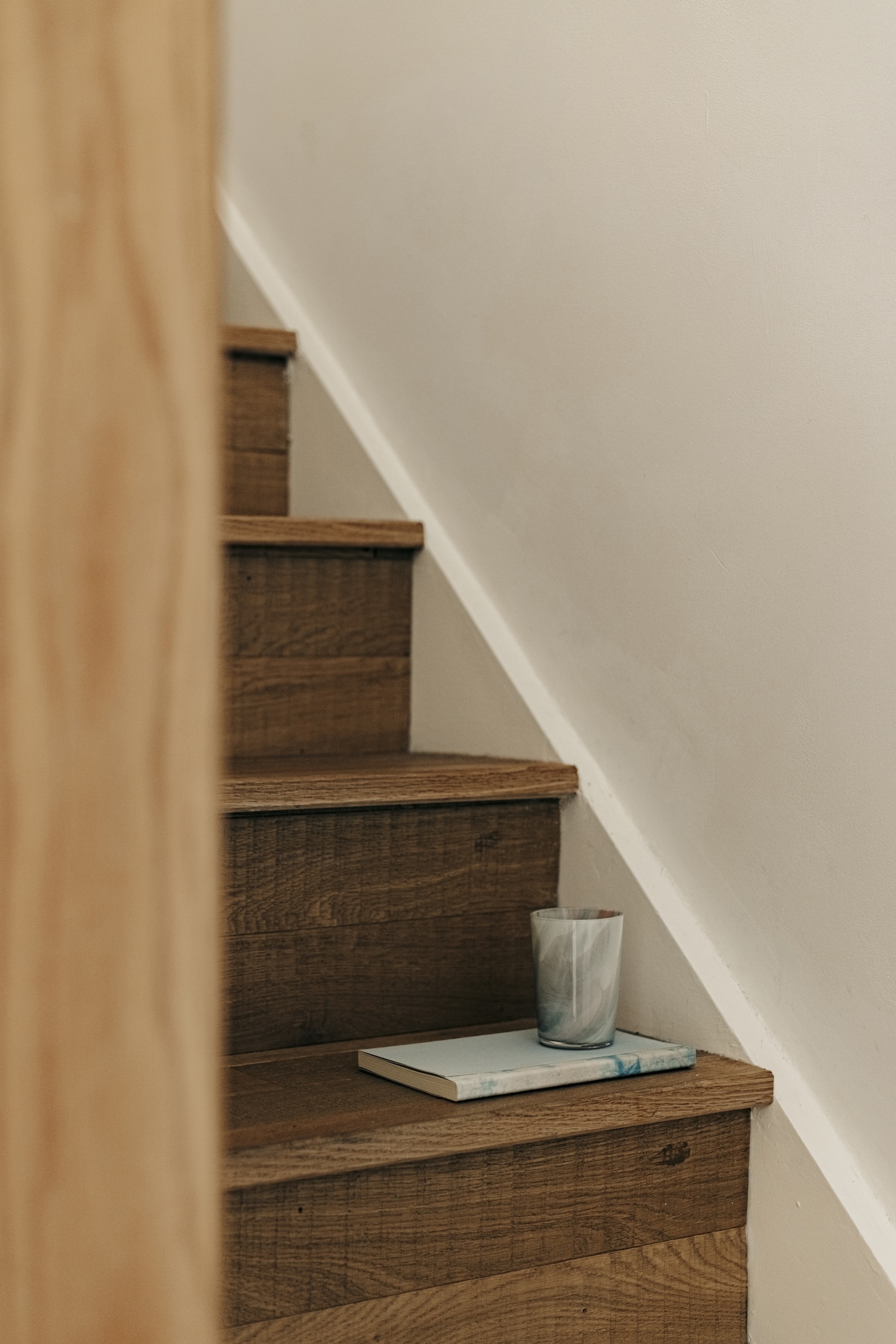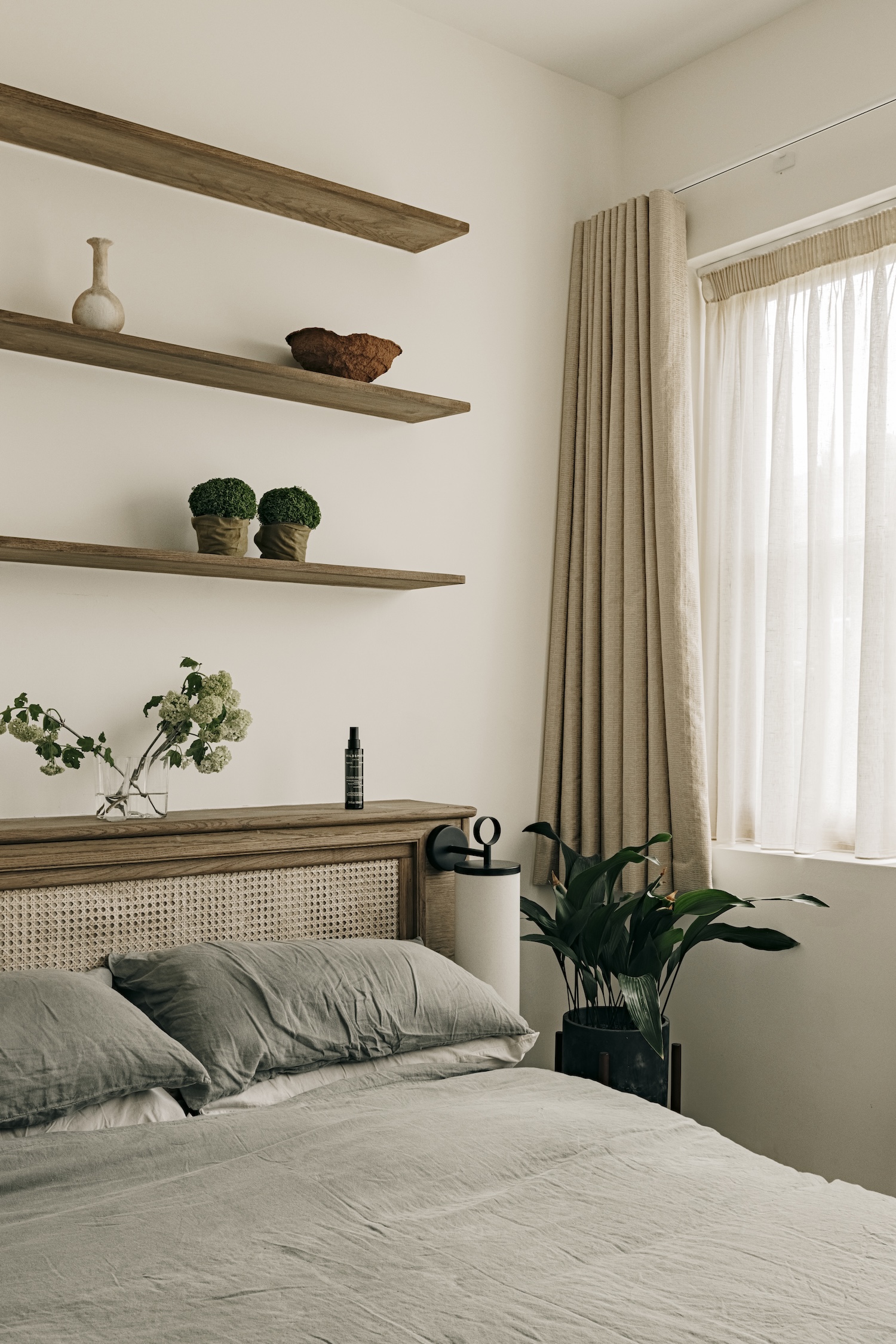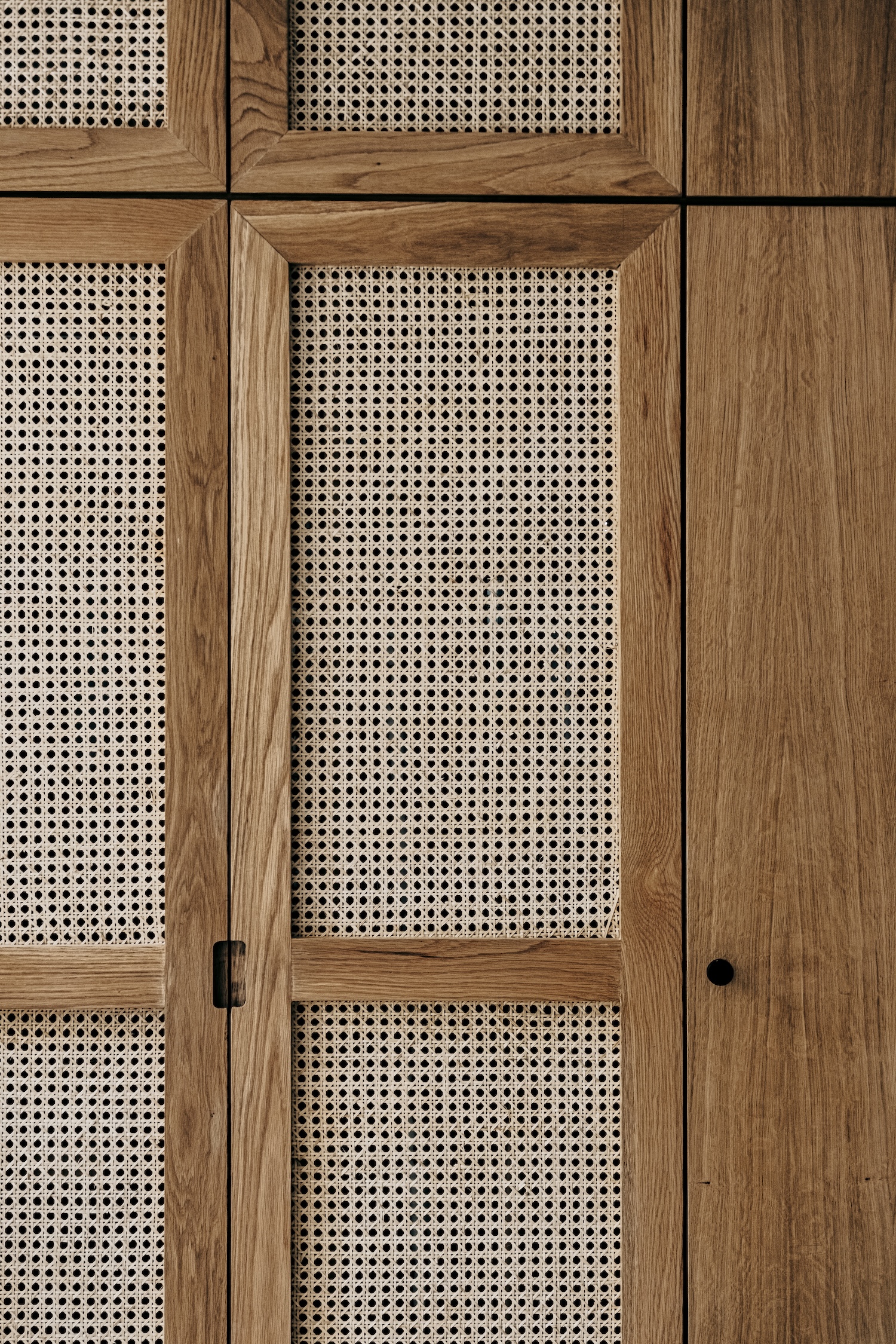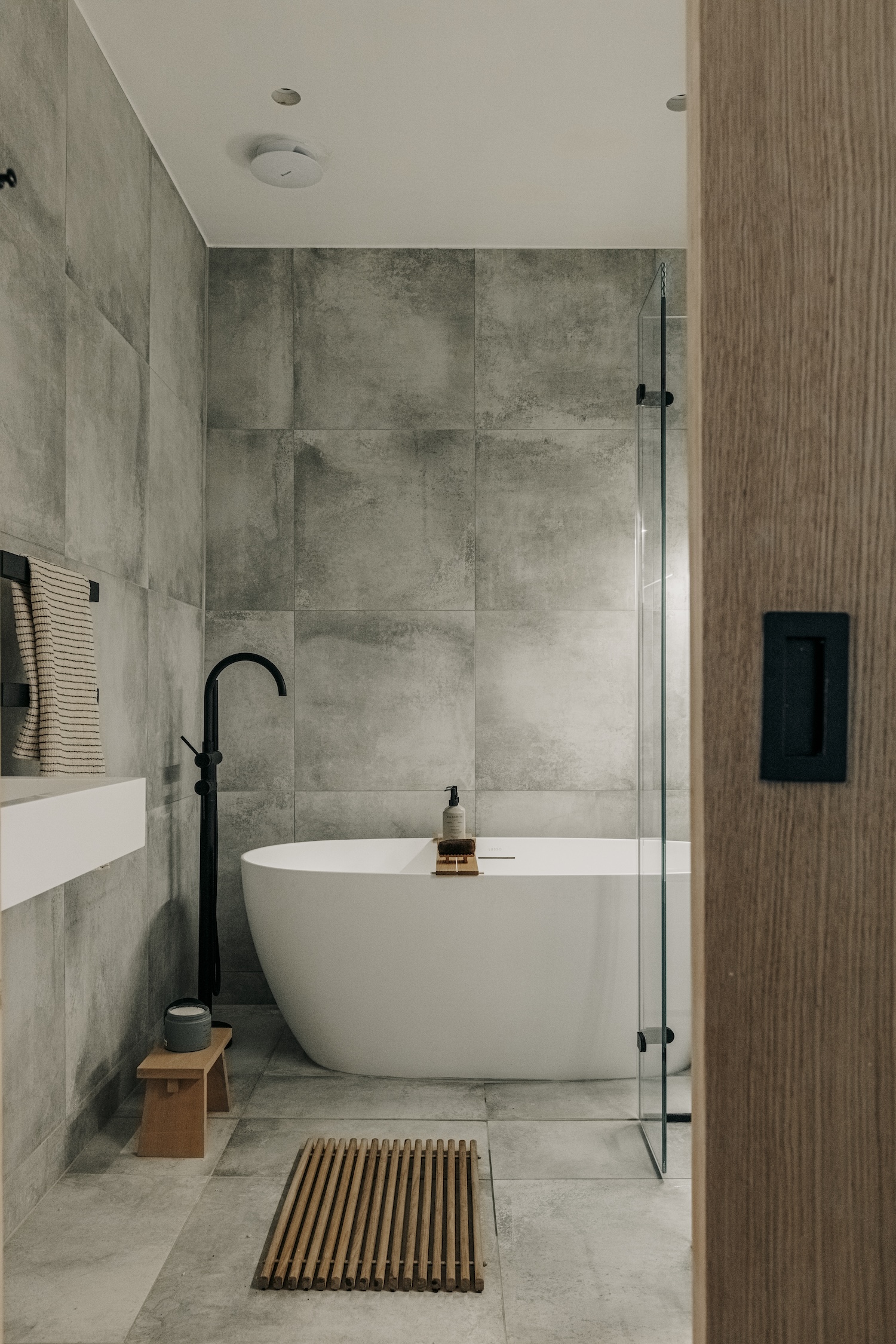Wiltspoon House is a minimal home located in London, United Kingdom, designed by fourteen a.m. The renovation of this typical two-storey London property reveals an approach to domestic space that feels particularly relevant in our post-pandemic world. While urban dwellers have long sought respite from city life, fourteen a.m.’s “Mindfulness Design Method” speaks to a more nuanced understanding of how our environments shape our psychological wellbeing.
At its core, Wiltspoon House embodies a Japanese-influenced design sensibility, evident in details like the shoji screen dividing the gym space and the entrance mat that recalls zen garden stone raking. These elements aren’t mere aesthetic choices but represent a deeper integration of Eastern philosophical principles that prioritize harmony and intentionality. The studio’s restrained material palette – primarily oak and cork – creates what the Japanese might call “ma” – the meaningful negative space that allows for contemplation.
The clever spatial reconfiguration demonstrates how contemporary domestic architecture continues to evolve beyond open plan towards what might be called “connected separation.” A bespoke joinery unit houses a projector while maintaining visual connections between living spaces – allowing for both togetherness and retreat. This balance reflects the changing nature of home life, where boundaries between work and leisure have become increasingly fluid.
Perhaps most telling is the studio’s consideration of non-human family members. A custom sunbed for Terrence, the couple’s Boston Terrier, positioned by his favorite window, represents architecture’s growing recognition that our emotional connections to space extend beyond human-centered design. As society increasingly acknowledges the importance of animal companionship to mental health, such thoughtful inclusions feel less like luxury and more like necessity.
The technical innovations here are subtle but significant. The marriage of IKEA carcasses with custom fronts in the kitchen represents a democratization of design that has roots in mid-century modernism’s ambition to make good design accessible. Similarly, the decision to clad the existing staircase rather than replace it speaks to an emerging sustainability ethos that values adaptation over demolition.
